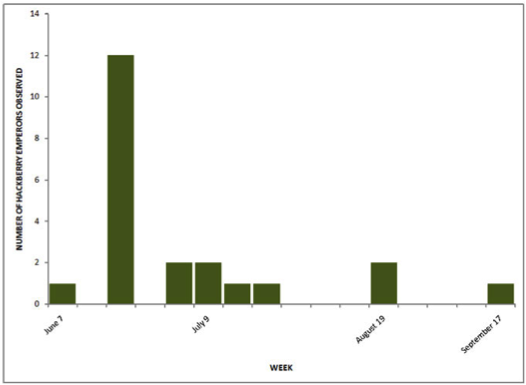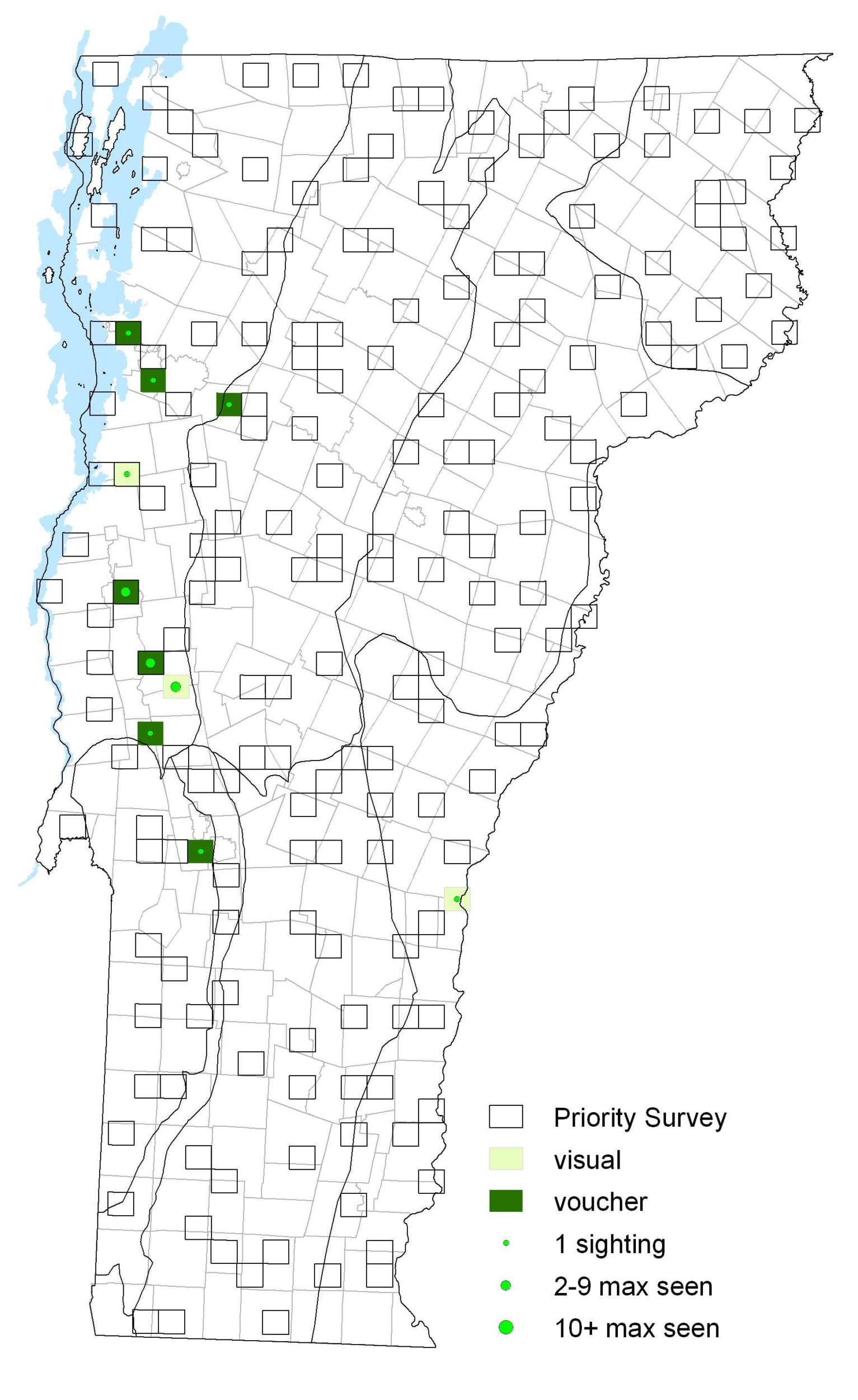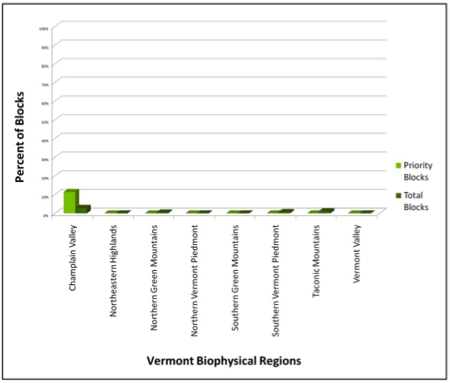|
Resident Conservation Status North American Range |
They fly in a fast and erratic manner, and rest upside down on tree trunks. Males perch on tall objects in sunny areas to watch for females. Some first brood larvae and all second brood larvae suspend feeding and overwinter in leaf litter at the base of hostplants. Caterpillars overwinter in groups inside dead rolled leaves. Third instar larvae, which turned brown prior to overwintering, become green as they resume feeding in the Hackberry trees.
Identification
Extremely variable geographically. Upperside is reddish brown. Forewing has one submarginal eyespot, a jagged row of white spots, and the cell has one solid black bar and two separate black spots.
Flight
Two generations in many northern areas of its range. The limited records reported during VBS suggested an early flight in June and early July and a second generation in mid August into September. Extreme dates: 7 June 2003 in South Burlington (C. Gifferd) and 17 September 2006 in Vergennes (D. Rolnick).
Distribution and Habitat
First state record was found on 19 August 2002 in Burlington (C. Gifford). Given the amount of collecting in the Burlington area this came as somewhat of a surprise. It is found in the St. Lawrence River valley as far as Beauport, Quebec. There were 11 records reported during VBS with only one sighting outside of the Champlain Valley.
As its name implies, this butterfly’s range is restricted to areas where Hackberry grows in Vermont; usually Floodplain Forests. However, Hackberry is sometimes planted in suburban areas (Burlington) where additional populations have been found. Adults feed on sap, mud, rotting fruit and excrement, which can sometimes take them outside of their regular Hackberry habitat. They are rarely seen nectaring. Larval host plant is American Hackberry (Celtis occidentalis). 







